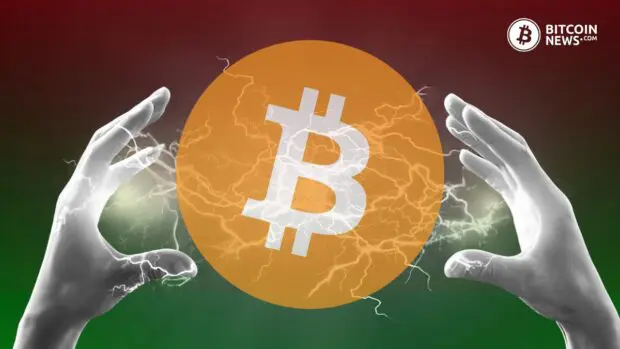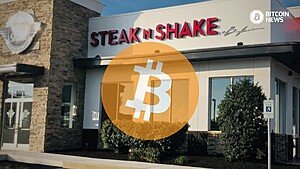A supply shock can dramatically alter the price of an asset when there’s an unexpected increase or decrease in its supply. For Bitcoin, the introduction of Exchange-Traded Funds (ETFs) in the U.S., with its substantial capital markets, is likely to cause a significant supply shock. This article delves into the nature of supply shocks, the potential impact of Bitcoin ETFs, and the broader effects of U.S. capital market involvement.

Understanding Bitcoin’s Inelastic Supply
A supply shock occurs when an unexpected event significantly disrupts the supply of an asset, leading to abrupt price changes. Such shocks can stem from regulatory shifts, sentiment fluctuations, or large institutional investments, creating an imbalance between supply and demand. However, Bitcoin stands apart from traditional assets like gold, stocks, oil, and virtually everything else due to its inelastic supply.
Bitcoin’s potential for a supply shock is exemplified through the analogy of cows and beef. If demand for beef surges, but the supply of cows is constrained by their long gestation periods, a supply shortage ensues. Prices then rise based on what buyers at the margin are willing to pay for the scarce supply. However, Bitcoin’s supply constraint is even more extreme. Unlike cows, which can eventually be bred to increase supply, Bitcoin has an immutable cap of 21 million coins that can ever be created. No more bitcoin can be minted beyond this limit.
As institutional and retail demand for bitcoin grows over time, this fixed supply will inevitably lead to a supply shock. When demand outstrips the limited supply, prices will be driven higher by buyers at the margin who are willing to pay a premium for scarce bitcoin. In writing about why Bitcoin will see a supply shock, it’s crucial to highlight this dynamic: Rising demand coupled with Bitcoin’s strictly capped supply means prices will inevitably be pushed up by those willing to pay the most at the margin for the remaining scarce coins. This supply shock scenario underpins Bitcoin’s potential for significant future price appreciation.
While supply shocks can impact other markets by altering production levels or mining output, no such adjustments are possible with Bitcoin. Its predetermined issuance schedule, capped at 21 million coins, renders the supply unresponsive to changes in demand. Regardless of market forces or circumstances, the Bitcoin protocol prohibits the creation of new coins beyond the predetermined limit, ensuring its supply remains inelastic.
The Role of ETFs in Bitcoin’s Supply Shock
ETFs, traded like stocks, encompass various assets, including Bitcoin. The integration of Bitcoin ETFs with conventional financial markets is noteworthy for several reasons:
1. Increased Accessibility and Legitimacy: ETFs provide broader bitcoin investment access, particularly to institutional investors and those wary of direct bitcoin engagement, thus legitimizing bitcoin as an investment asset and inviting more significant capital inflow.
Related reading: The SEC’s Approval of ETFs has Officially Mainstreamed Bitcoin
2. Institutional Participation: Given the U.S.’s dominant capital markets, its foray into Bitcoin can absorb a large supply portion, propelling demand.
3. Price Dynamics: With ETF-induced demand against Bitcoin’s capped supply of 21 million units, a supply shock is likely, driving prices up according to supply and demand principles.
Despite varying perspectives, the U.S. capital markets remain the largest globally and hold substantial sway over asset valuations and adoption. Even modest allocations from U.S. investors can channel considerable capital into Bitcoin. Furthermore, increased U.S. market participation could elevate Bitcoin’s status, potentially reshaping its global investment narrative and appeal.
Trade-offs and Self-Custody
While ETFs can lead to ‘number-go-up’ excitement, reflecting positively on bitcoin’s price and acceptance, this integration carries trade-offs.
The essence of Bitcoin is in its self-sovereign nature, allowing individuals full control over their assets. ETFs, acting as custodians, dilute this aspect. True believers in Bitcoin’s philosophy advocate for self-custody, ensuring personal control and adhering to the principle of trust minimization. As such, while ETFs can serve as a bridge for certain investors, the quintessential practice of self-custody remains a core tenet for those valuing the foundational principles of Bitcoin.

Conclusion
Bitcoin ETFs in the U.S. have the potential to create a supply shock that could rocket bitcoin’s price to astronomical heights – or at least to a level that would make even the most stoic of accountants raise an eyebrow. This seismic shift will be a result of Bitcoin’s ability to provide a unique blend of financial autonomy and digital scarcity.
While the advent of ETFs might have some purists grumbling about the dilution of Bitcoin’s rebel spirit, it’s essential to recognize the bigger picture. Yes, the idea of Bitcoin mixing with the traditional financial scene is a bit like watching your anarchist cousin settle into a 9-to-5 job—slightly unsettling but also fascinating in its own right.
The Bitcoin universe is expanding, with ETFs acting as a new gateway for the uninitiated. No longer do people have to KYC at Coinbase to build a stack. Whether you’re a self-custody crusader or just thrilled about the ‘number-go-up’ prospect, one thing’s clear: in the world of Bitcoin, the only constant is change (and the occasional supply shock-induced price frenzy).
Here’s to riding the wave, stacking sats, and remembering that the market can stay irrational longer than one can remain solvent—so don’t trade, just buy and hold.










